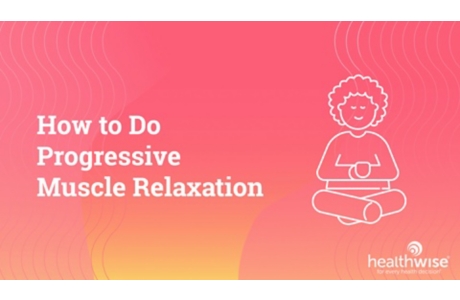Condition Basics
What is premenstrual syndrome (PMS)?
Premenstrual syndrome (PMS) is a set of physical or mood-related symptoms that occur before your menstrual period each month. Symptoms begin about 1 to 2 weeks before your period starts and go away in the first few days of your period. It is common to have tender breasts, bloating, and muscle aches a few days before your period. These are normal premenstrual symptoms. But when symptoms interfere with your daily life, they are called PMS.
What causes it?
PMS is tied to hormone changes that happen during your menstrual cycle. Doctors aren't sure why premenstrual symptoms are worse in some people than others. PMS can run in the family.
What are the symptoms?
Common physical signs of PMS include bloating, swollen and tender breasts, lack of energy, headaches, cramps, and low back pain. It's also common to feel sad, angry, irritable, or anxious. Symptoms can occur about 1 to 2 weeks before your period starts. These symptoms go away in the first few days of your period.
How is it diagnosed?
No single test can diagnose PMS. Your doctor will ask questions about your symptoms and will do a physical exam. Your doctor may want you to keep a written record of your symptoms for 2 to 3 months. This is called a menstrual diary. Your doctor can use it to help diagnose PMS.
How is PMS treated?
No single treatment works for everyone. Lifestyle changes may help. These changes could include healthy eating, regular exercise, and cutting back on alcohol and caffeine. If these changes don't help to relieve your symptoms after a few menstrual cycles, your doctor can prescribe medicine for problems like bloating or for more severe PMS symptoms.
Health Tools
Health Tools help you make wise health decisions or take action to improve your health.
Symptoms
Premenstrual symptoms occur about 1 to 2 weeks before your period starts. These symptoms go away in the first few days of your period. Many symptoms have been linked to PMS. They may vary greatly from cycle to cycle and be worse during times of more stress.
Common physical symptoms include:
- Bloating, weight gain.
- Fatigue, lack of energy.
- Headaches.
- Cramps, aching muscles and joints, low back pain.
- Breast swelling and tenderness.
- Food cravings, especially for sweet or salty foods.
- Sleeping too much or too little.
- Low sex drive.
- Constipation or diarrhea.
Other symptoms affect mood and behavior. They include:
- A sad or depressed mood.
- Anger, irritability, aggression.
- Anxiety.
- Mood swings.
- Decreased alertness, trouble concentrating.
- Withdrawal from family and friends.
What Happens
Most people first get PMS in their mid-20s. But it can start with your first period and can continue until menopause. After menopause, PMS goes away because hormones are low and don't rise and fall each month.
Learn more
When to Call a Doctor
Call your doctor if:
- PMS symptoms regularly disrupt your life.
- You feel out of control because of PMS symptoms.
- Home treatments don't help.
- Severe PMS symptoms (such as depression, anxiety, irritability, crying, or mood swings) don't end a couple of days after your menstrual period starts.
Exams and Tests
No single test can diagnose PMS. Your doctor will ask questions about your symptoms and do a physical exam. It's important to make sure that your symptoms aren't caused by something else. So it may take more than one visit to diagnose your symptoms.
Your doctor may want you to keep a written record of your symptoms for 2 to 3 months. This is called a menstrual diary. It can help you track when your symptoms start, how bad they are, and how long they last. Your doctor can use this diary to help diagnose PMS.
Thyroid problems sometimes cause symptoms like those of PMS. So you may have a thyroid-stimulating hormone (TSH) blood test to make sure that your thyroid gland is working as it should.
Learn more
Treatment Overview
There are ways to reduce your PMS symptoms and their impact on your life. But no single treatment works for everyone. You may have to try several to find the right choices for you.
The first step is to make lifestyle changes. These are things like eating healthy, limiting things that make your symptoms worse (such as caffeine or alcohol), or getting regular exercise.
If you still have moderate to severe symptoms after you try home treatment for two or three cycles, talk to your doctor. You can try other treatment options. These may include taking selective serotonin reuptake inhibitor (SSRI) antidepressants or hormonal birth control.
Learn more
Self-Care
Self-care for PMS means practicing healthy habits, managing pain, and reducing stress. When you use these tips, it's best to try one or two at a time. This will help you find which tips are most helpful.
- Keep a menstrual diary.
Write down your symptoms, how severe they are, when you have your period, and when you ovulate. This can help you find patterns in your cycle and plan ahead to better cope with symptoms.
- Practice healthy habits.
- Get at least 2½ hours of moderate exercise a week. Exercise may help relieve pain and mood-related PMS symptoms.
- Eat a variety of healthy foods. This can include vegetables, fruits, milk products, whole grains, and protein.
- Limit food and drinks that make your symptoms worse. This may include things like caffeine, alcohol, or salt.
- Quit smoking, if you smoke.
- Manage pain.
- Ask your doctor if you can take a nonsteroidal anti-inflammatory drug (NSAID) such as naproxen or ibuprofen to relieve pain and reduce menstrual bleeding. Try to start taking an NSAID 1 or 2 days before you expect pain to start. NSAIDs work best when taken before and at regular intervals throughout the days you have pain.
- Wear a more supportive bra, such as a sports bra, when your breasts are tender.
- Reduce stress.
- Try some relaxation techniques, such as breathing exercises, yoga, or massage therapy.
- Practice better time management.
- Get enough sleep.
- Create a support system. Join a support group of people who are managing PMS. With your loved ones, plan ways to reduce the demands placed on you when you have PMS.
Learn more
Watch
Medicines
If you have moderate to severe premenstrual symptoms even after you've tried home treatment and lifestyle changes, talk to your doctor about using medicine.
Commonly used medicines include:
- Nonsteroidal anti-inflammatory drugs (NSAIDs). NSAIDs such as ibuprofen and naproxen relieve premenstrual pain and cramps. They also reduce menstrual bleeding. They work best when taken before and during the premenstrual pain period.
- Selective serotonin reuptake inhibitors (SSRIs). SSRIs such as citalopram, fluoxetine, and paroxetine may help relieve physical and emotional symptoms of PMS. You can take them during the premenstrual weeks only. Or you can take them continuously.
- Hormonal birth control. It may help relieve physical and emotional symptoms of PMS or premenstrual dysphoric disorder (PMDD).
- Diuretics. They may reduce bloating and breast tenderness if taken during the premenstrual weeks.
Learn more
Other Treatment
Most complementary therapies aren't considered standard treatment for PMS. But you may find that one or more of them helps relieve some of your symptoms. Before you try any of these therapies, talk with your doctor first.
Some complementary therapies that may help with PMS symptoms include:
- Acupuncture or acupressure.
- Bright light therapy.
- Primrose oil.
- Vitex.
- Calcium supplements.
Learn more
Related Information
Credits
Current as of: November 27, 2023
Author: Healthwise Staff
Clinical Review Board
All Healthwise education is reviewed by a team that includes physicians, nurses, advanced practitioners, registered dieticians, and other healthcare professionals.
Current as of: November 27, 2023
Author: Healthwise Staff
Clinical Review Board
All Healthwise education is reviewed by a team that includes physicians, nurses, advanced practitioners, registered dieticians, and other healthcare professionals.




